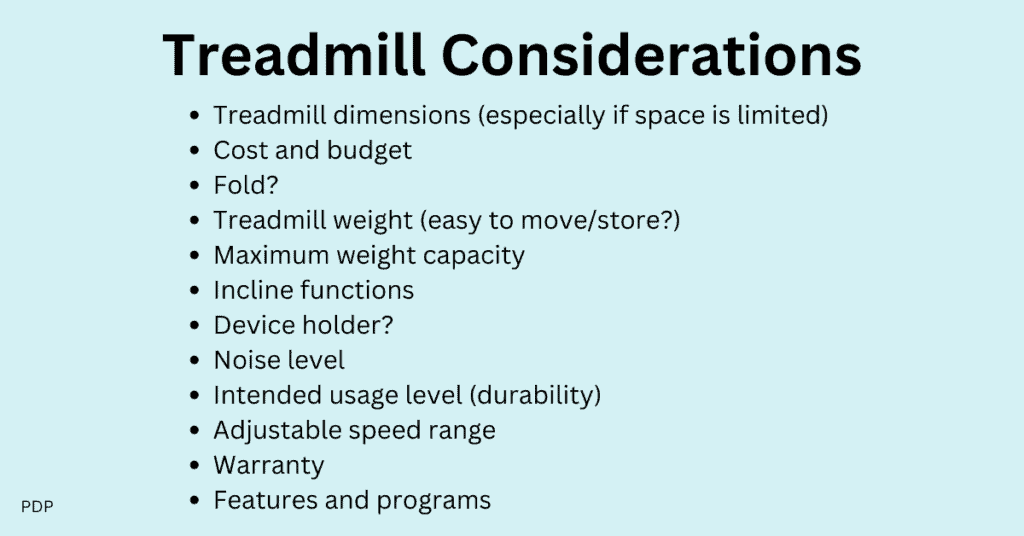Benefits of Incline Treadmill Workouts
Incorporating diversity into our workout routines is the cornerstone of achieving holistic fitness goals. While the conventional flat-surface treadmill exercises holds its place in the fitness realm, adding incline treadmill training to your routine can also be beneficial.
This article goes over some of the advantages that incline treadmill training offers! That said if you are new to exercise, or have specific concerns, talk to your healthcare provider before starting a workout plan.
What are the benefits of incline treadmill exercise?
Can be a low or high impact exercise
Incline treadmill exercise offers a lot of flexibility to tailor your workout to your needs. Along with the adjustable incline, you can increase or decrease the intensity of your workout with speed. This versatility allows individuals to customize their training session according to their fitness level and goals, making incline treadmill exercise suitable for beginners and seasoned athletes alike.
Of course, running on an incline takes your workouts and performance to the next level. The incline increases the workload on your muscles, particularly targeting more posterior chain muscles – such as your glutes, hamstrings, and calves. This added challenge helps improve lower body endurance and power, making it an excellent option for those aiming to enhance their athletic performance or simply take their fitness regimen up a notch.
Moreover, if you’re seeking a low-impact exercise option, an incline walking workout provides an effective workout that is gentle on the joints, particularly the knees. Compared to flat-level walking, incline walking may actually reduce the forces exerted on the knee. Researchers conducting a study on knee biomechanics during incline walking found that the internal knee abduction movement was lower during incline walking than during flat-level walking2. This reduction in knee joint force can be especially beneficial for individuals dealing with knee pain conditions such as knee osteoarthritis or those recovering from knee replacement surgery.
However, it’s important to note that the impact of incline treadmill walking on knee health can vary depending on individual factors. If you frequently experience knee flare-ups, incline treadmill walking may offer a knee-friendly yet still challenging workout option without exacerbating discomfort or flare-ups. Regardless, it’s crucial to listen to your body and adjust the intensity and incline level accordingly to ensure a safe and effective workout experience.
Increased knee and hip muscle activation
Incline treadmill workouts offer a unique advantage by activating certain lower body muscle groups to a higher extent compared to regular walking. From a biomechanical standpoint, the change in incline alters the resistance that our lower body muscles must overcome to continue moving forward; the steeper the incline, the greater the challenge on leg muscles. Walking at an incline demands greater work from our muscles compared to flat-level walking. You may have personally experienced this heightened muscular engagement if you’ve attempted incline training or embarked on a challenging uphill hike, where you encounter that familiar “muscle burning” sensation during the workout or even experience muscle soreness the following day.
A study comparing the effects of different walking speeds and inclines revealed that, when walking uphill, hip extensors (glutes and hamstrings) , knee extensors (quads) , and ankle plantarflexors (calf muscles) exhibited higher activation levels compared to level walking; Furthermore, this activation increased with faster walking speeds1. Although the degree of muscle activation in specific muscle groups may vary among individuals, it is commonly observed that incline walking workouts engage the glutes and hamstrings to a greater extent3.
The increased activation of these key lower body muscle groups during incline treadmill workouts not only enhances the intensity of the exercise but also contributes to greater muscle strength and endurance development over time.
Higher cardiovascular challenge
Another benefit of incline treadmill training for you is that it elevates your heart rate more than regular treadmill workout at the same speed. This heightened heart rate response is an excellent way to introduce a greater cardiovascular challenge to your workout and improve your heart health.
The Centers for Disease Control and Prevention (CDC) recommends 150 minutes of moderate-intensity physical activity per week, along with two days of muscle-strengthening activities. Treadmill incline walking can count towards your moderate-intensity physical activity, making it a valuable addition to your overall fitness routine.
Greater calorie burn
Another benefit of incline treadmill exercise is its ability to increase caloric expenditure. When compared to walking at the same speed on a flat-level treadmill, walking on an incline results in burning more calories during the workout4. This is due to the increased muscular effort required for incline walking, leading to higher energy expenditure (indicated by a higher heart rate) and ultimately, more calories burned.
The elevated caloric burn associated with incline treadmill exercise can be particularly advantageous for individuals aiming to lose or manage weight. The exact number of calories burned varies depending on individual factors such as weight and workout parameters like incline level and duration.
Regardless of the workout type you choose, it’s your commitment to a regular exercise routine that holds the most significance. Opt for workouts that you genuinely enjoy and are likely to stick with over the long term. Consistency not only ensures ongoing progress but also contributes to the multitude of benefits associated with regular exercise and sustained physical activity.
Build endurance
Incline treadmill exercise is an effective way to build both muscular and cardiovascular endurance. Muscular endurance refers to the ability of your muscles to sustain repeated contractions over an extended period, while cardiovascular endurance pertains to the ability of your heart, lungs, and circulatory system to deliver oxygen and nutrients to working muscles efficiently over a prolonged period.
When you walk or run on an incline, your muscles, particularly those in your lower body such as the quadriceps, hamstrings, calves, and glutes, must work harder to overcome the resistance of the incline. This increased workload challenges these muscles to sustain contractions for longer durations, thereby enhancing muscular endurance.
Moreover, incline treadmill exercise also elevates your heart rate and increases the demand for oxygen-rich blood throughout your body. As your cardiovascular system works harder to meet the increased oxygen demand, it becomes more efficient over time. Consistent incline treadmill workouts that challenge you gradually improve your heart’s ability to pump blood efficiently, your lungs’ capacity to take in oxygen, and your muscles’ ability to utilize oxygen effectively, all of which contribute to improved cardiovascular endurance.
Walking vs running on an incline treadmill?
Both walking and running on an incline advantageous for fitness and performance.
For running on an incline treadmill, this mode of exercise is optimal for increasing aerobic capacity. Running on an incline provides a more intense workout compared to walking, as it challenges both your cardiovascular system and muscular endurance to a greater extent.
On the other hand, walking on an incline treadmill also provides a good cardio workout but at a more moderate intensity compared to running. The incline still increases the workload on your muscles, leading to improved muscular endurance over time. Additionally, one of the main benefits of incline walking is that it can be a suitable option for individuals looking for a lower-impact exercise alternative while still getting the benefits of cardio exercise.
Considerations of incline training
Gradual progression
Leaving behind the “all or nothing” mindset is crucial for sustainable progress and long-term success in your fitness journey. Approach your incline training with a balanced mindset, focusing on steady progress rather than pushing yourself to the limit from the start.
Especially if you are new to exercise, the last thing you want is an overuse injury. By gradually increasing the incline level, duration, or intensity of your workouts over time, you give your body the opportunity to adjust and strengthen gradually, building endurance and resilience while minimizing the risk of injury.
For a clear starting point, consider using a rate of perceived exertion scale from 0 to 10, where 0 is “not hard at all” and 10 is “the hardest you have ever pushed yourself.” Aim for an incline level and walking pace that feels like a 5-7 out of 10 on this scale. This doesn’t mean you should shy away from high-intensity workouts, but as a beginner, it’s crucial to understand your current capabilities to effectively gauge and progress in future workouts.
Footwear
Everyone has different foot needs, making it essential to find a pair of shoes that suit you best. However, a good starting point is to consider shoes that you have used before and know fit well and perform effectively during workout activities.
Considerations for purchasing an incline treadmill
If you are considering investing in an incline treadmill, here are some thing to consider:

Incline range
Most incline treadmills tend to provide incline levels of 1-10%, which is plenty for most fitness goals.
Speed range
The standard speed range for incline treadmills typically falls between 1 to 10 mph. However, it’s important to consider your specific training needs, especially if you’re preparing for sports or events that require running at faster speeds.
User weight capacity
Ensure that the treadmill can support your weight comfortably.
Cost
Incline treadmills come with varying costs, ranging from $600 to $4000, with some being priced higher or lower. A more budget-friendly treadmill doesn’t necessarily indicate poor quality, but it may lack the advanced features found in higher-end models.
Size
There are plenty of options for more compact designs if space is limited. Be sure to check the dimensions ahead of time if you have already planned where to keep your treadmill.
Noice
Consider the noise level produced by the treadmill during operation. Quieter models are preferable, especially if you plan to use the treadmill in shared living spaces.
Portability/foldable features
If space is a consideration, a foldable treadmill might be an advantageous choice. Look for models with easy folding mechanisms for convenient storage.
Program variety
Some treadmill models come with pre-set workout programs, but certain companies also provide their own workout subscription programs for individuals seeking additional options and accountability. For example, NordicTrack is well known for its iFit subscription which includes live and pre-recorded workouts led by fitness experts from all over the world.
Warranty
Warranty terms vary significantly among companies, often encompassing different coverage periods and conditions for various parts of the treadmill.
Bottomline
Whether you’re looking to challenge yourself with high-intensity workouts or prefer a low-impact option, the incline treadmill offers versatility to suit your fitness needs. However, it’s important to remember that individual experiences may vary, and if you have specific concerns or would like personalized guidance, don’t hesitate to contact your healthcare provider or exercise professionals for help.
References
- Franz, J. R., & Kram, R. (2012). The effects of grade and speed on leg muscle activations during walking. Gait & posture, 35(1), 143–147. https://doi.org/10.1016/j.gaitpost.2011.08.025
- Haggerty, M., Dickin, D. C., Popp, J., & Wang, H. (2014). The influence of incline walking on joint mechanics. Gait & posture, 39(4), 1017–1021. https://doi.org/10.1016/j.gaitpost.2013.12.027
- Orozco, E., Joslin, H., Blumenthal, K., & Rosario, M. (2022). Characteristics of Lower Extremity Muscle Activation in Response to Change in Inclination while Walking on a Treadmill. European Journal of Sport Sciences, 1(4), 22–28. https://doi.org/10.24018/ejsport.2022.1.4.24
- Silder, A., Besier, T., & Delp, S. L. (2012). Predicting the metabolic cost of incline walking from muscle activity and walking mechanics. Journal of biomechanics, 45(10), 1842–1849. https://doi.org/10.1016/j.jbiomech.2012.03.032





